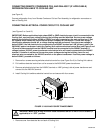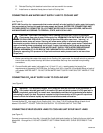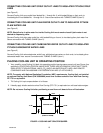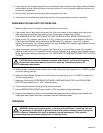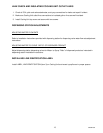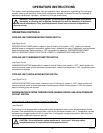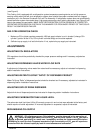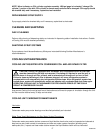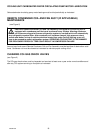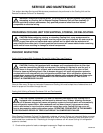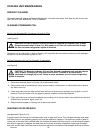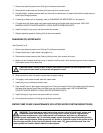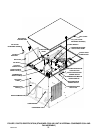
300381000
15
OPERATORS INSTRUCTIONS
This section covers operating controls, daily pre-operation check, adjustments, replenishing CO
2
and syrup
supplies, cleaning and sanitizing, Cooling Unit maintenance, Remote Condenser Coil and Fan Assembly (if
applicable) maintenance, lubrication, and servicing CO
2
gas check valves.
WARNING: Disconnect electrical power to Cooling Unit to prevent personal injury before
attempting any Cooling Unit or Rooftop Condenser Coil and Fan Assembly (if applicable)
internal maintenance. Only qualified personnel should service internal components or
electrical wiring.
OPERATING CONTROLS
COOLING UNIT REFRIGERATION POWER SWITCH
(see Figure 5 or 6)
REFRIGERATION POWER switch, located on front of Cooling Unit, placed in ‘‘OFF’’ position will interrupt
electrical power to refrigeration compressor, agitator motor, condenser fan motor (if applicable), and carbonated
water circulating pump. Switch must be in ‘‘ON’’ (up) position for operation. REFRIGERATION POWER
SWITCH DOES NOT DISRUPT ELECTRICAL POWER TO CARBONATORS PUMPS MOTORS.
COOLING UNIT CARBONATOR MOTOR SWITCH
(see Figure 5 or 6)
CARBONATOR MOTORS power switch, located on front of Cooling Unit, placed in ‘‘OFF’’ (down) position will
interrupt electrical power to both carbonators pumps motors. Switch must be placed in ‘‘ON’’ (up) position before
carbonators will operate.
COOLING UNIT CIRCULATING MOTOR SWITCH
(see Figure 5 or 6)
CIRCULATING MOTOR power switch, located on front of Cooling Unit, placed in ‘‘OFF’’ (down) position will
interrupt electrical power to carbonated water circulating pump. Switch must be placed in ‘‘ON’’ (up) position
before circulating pump will operate.
REFRIGERATION SYSTEM TEMPERATURE SENSING DEVICE AND HIGH-PRESSURE
CUTOUT SWITCH
Cooling Unit with Internal Condenser Coil and Fan Assembly.
(see Figure 5)
The Cooling Unit is equipped with a refrigeration system temperature sensor which will automatically initiate
shutdown if the temperature of the liquid return line from the condenser exceeds 155° F. Temperature rise may
be caused by a clogged condenser coil air intake filter, or refrigeration components problem. After cool down,
the refrigeration system will restart as required.
CAUTION: If the refrigeration system continues to ‘‘short cycle’’ following restart,
immediate attention is required to avoid compressor failure.



